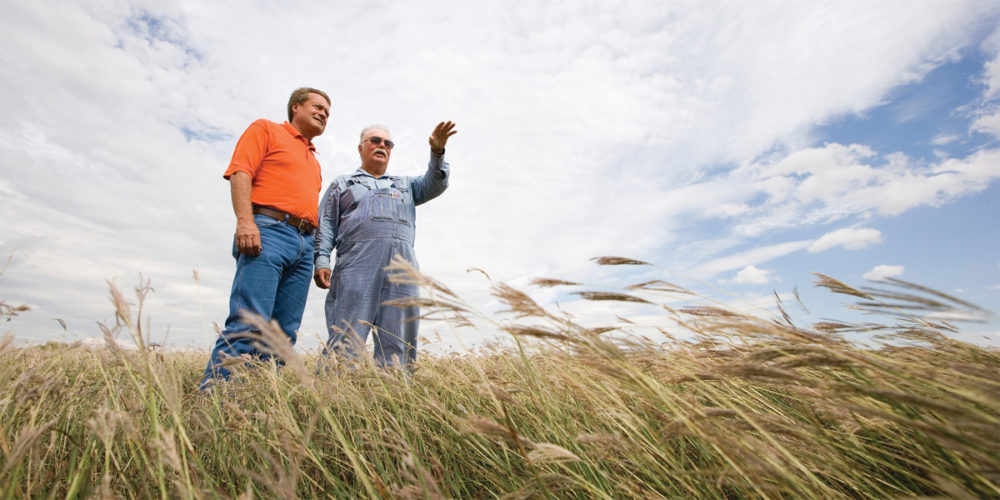Look out rural America, President Trump has an executive order for you. As the White House looks to create a sense of achievement before its first 100 days is up on Saturday, the President will sign a flurry of new orders this week, including one today “promoting agriculture and rural prosperity in America.” But will it really help struggling farmers and rural economies? That remains to be seen.
Much has been said about farmers and rural voters feeling forgotten in the early months of the Trump administration, which is probably why he’s rushing to sign something at a sit-down with farmers this afternoon, just before his 100-day report card is delivered.
The order will reportedly sunset the White House Rural Council created by President Obama in 2011, and in its place establish an interagency task force “to identify legislative, regulatory, or policy changes to promote American agriculture, economic development, job growth, infrastructure improvements, technological innovation, energy security, and quality of life in rural America.”
Sounds great, but of course the devil is in the details. While we’re waiting for those, let’s re-cap what the administration has done for to farmers and rural America so far:
- Left them waiting a record 95 days for a Secretary of Agriculture. At long last, the Senate last night confirmed former Georgia Governor Sonny Perdue as Secretary of Agriculture. After being sworn in this morning, he’ll join the President and assembled farmers this afternoon. But this moment has been a long time coming. A record long time…no agriculture secretary in modern times has assumed the office later in a new administration. The protracted delay by the White House in nominating Perdue and filing the required paperwork created anxiety and consternation among farmers and rural residents. And it has had real impacts, as Congressional leaders on both sides of the aisle pointed out in an April 3 letter to the full Senate. Not the least of these impacts is that there was no champion for farmers in the cabinet when the White House produced its initial budget blueprint last month (see #2 below). Asked by members of the Senate Agriculture Committee during his March 23 confirmation hearing if he had been consulted during the budget development process, Perdue stated flatly: “I had no input in the budget.”
- Proposed slashing the USDA’s farmer-serving budget by a whopping 21 percent. The Trump administration’s initial budget blueprint for the Department of Agriculture was panned by farmers, members of Congress, and UCS. And no wonder. It would cut direct technical assistance to farmers, funding for loans and grants to improve rural water systems, and, potentially, food assistance programs that serve low-income rural residents. (See my summary here.)
- Threatened to deport farm workers, creating an agricultural labor shortage. Going back to the campaign, candidate Trump took a hard line on immigration, what with the wall, the deportation force, and extreme vetting. Nearly 100 days into the administration, not much has changed, and farmers who rely on immigrant labor are worried. The Associated Press has estimated that undocumented immigrants account for 46 percent of the 800,000 farm workers on the nation’s crop farms. The dairy industry has also indicated dismay at the administration’s stance on immigration, fearing it will lose workers.
- Appears to have endorsed the “more-more-more” strategy that has clearly failed farmers. Last month, I wrote about the fallacy of the “more-more-more” approach to US agriculture, in which the debunked imperative to double global food production is wielded as a rationale for US farmers to pump out more corn and other commodity crops at all costs. I noted that this is not working well for those US farmers, who achieved record-high harvests for corn and soybeans last year, but at the same time found their incomes at the lowest levels since 2002. President Trump’s commitment to more-more-more seems evident in, for example, his nomination of the governor of the nation’s #1 corn state (Iowa) to be the next ambassador to China—a move that suggests doubling down on production of those same old crops, in hopes of selling more of them into overseas markets.
- Denied a major existential threat to agriculture—climate change—and with that, denied farmers the chance to benefit from solving it. President Trump has made his climate denial clear, with earlier executive orders, personnel decisions, and the threat to pull the United States out of the Paris Climate Agreement. Companies from a range of industries have appealed to the administration to reject climate denial and instead take actions to help the nation be a leader in the low-carbon economy. Now a leading farm group has also adopted that message, with the recognition that farmers also stand to benefit from climate action and suffer from inaction.
UCS to Trump administration: Farmers need real help now!
So, for US farmers, the first 100 days of the Trump presidency have been disappointing. What about the next 100 days, and the 100 days after that? With the arrival of a new agriculture secretary, UCS is gearing up to press the administration for real leadership for the nation’s farm and food system.
The work begins now.
That’s why this week, we’ll deliver a petition (with more than 29,000 signatures) asking the new Secretary to prioritize smarter public investments that make healthy foods more affordable, promote all types of farming (not just more-more-more), improve children’s health and well-being, and help farmers adopt science-based, sustainable farming practices that can help them succeed while protecting the critical natural resources we all depend upon.

